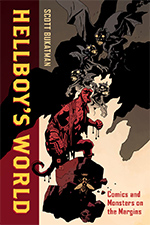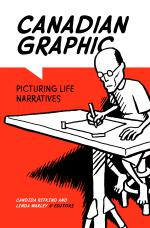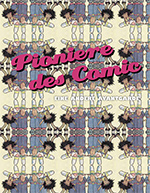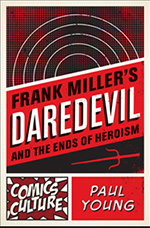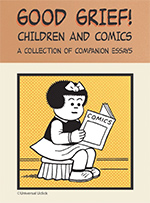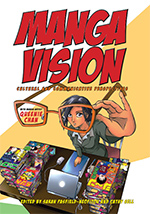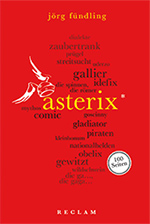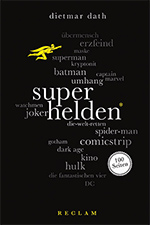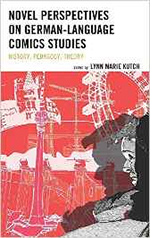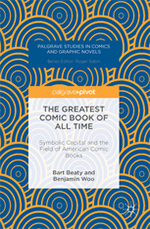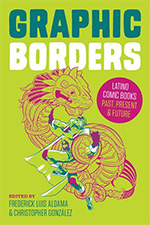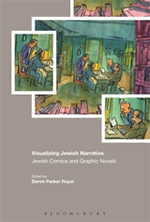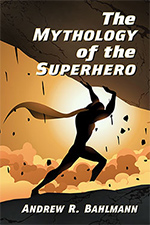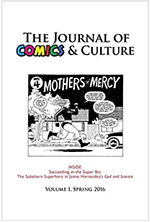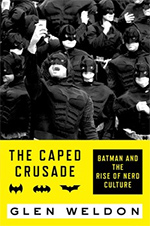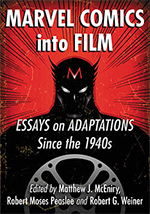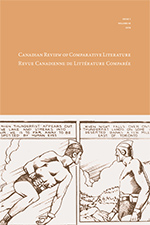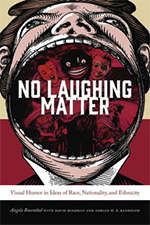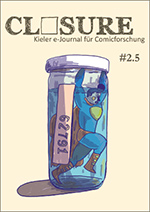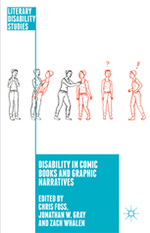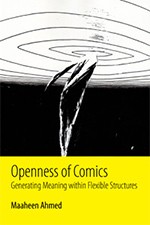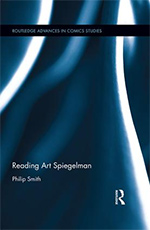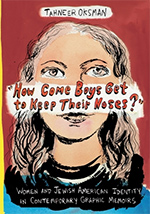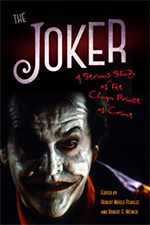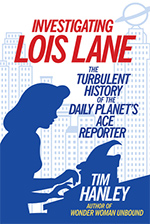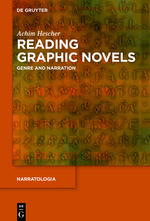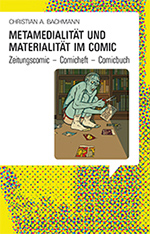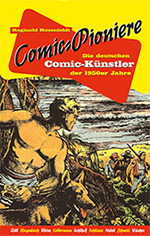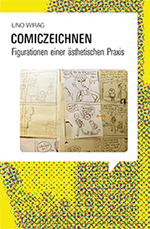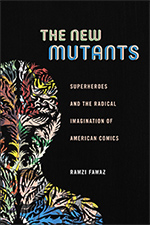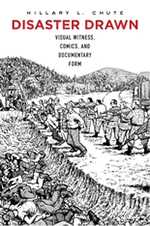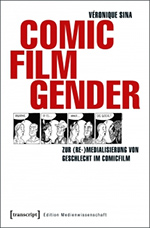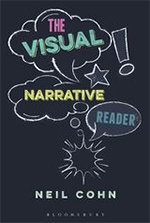Im Monitor werden in unregelmäßigen Abständen aktuelle Publikationen aus den letzten 6 Monaten vorgestellt, die für die Comicforschung relevant sein könnten. Die kurzen Ankündigungstexte dazu stammen von den jeweiligen Verlagsseiten. Haben Sie Anregungen oder Hinweise auf Neuerscheinungen, die übersehen worden sind und hier erwähnt werden sollten? Das Team freut sich über eine Mail an redaktion@comicgesellschaft.de. -> Zu früheren Monitoren.
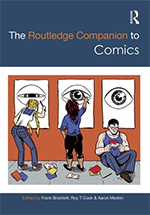
The Routledge Companion to Comics
Frank Bramlett, Roy T. Cook und Aaron Meskin (Hrsg.)
Routledge
456 Seiten
ISBN 978-0-4157-2900-0 (Hardcover)
~£ 150,00
Juli 2016
Verlagsseite
This cutting-edge handbook brings together an international roster of scholars to examine many facets of comics and graphic novels. Contributor essays provide authoritative, up-to-date overviewsof the major topics and questions within comic studies, offering readers a truly global approach to understanding the field. The Routledge Companion to Comics expertly organizes representative work from a range of disciplines, including media and cultural studies, literature, philosophy, and linguistics. More than an introduction to the study of comics, this book will serve as a crucial reference for anyone interested in pursuing research in the area, guiding students, scholars, and comics fans alike.
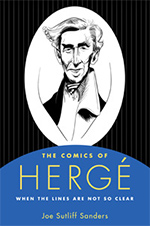
The Comics of Hergé:
When the Lines Are Not So Clear
Joe Sutliff Sanders (Hrsg.)
University Press of Mississippi
192 Seiten
ISBN 978-1-4968-0726-7
~$ 60,00
Juli 2016
Verlagsseite
The book opens with Hergé’s aesthetic techniques, including analyses of his efforts to comprehend and represent absence and the rhythm of mundaneness between panels of action. Broad views of his career describe how Hergé navigated changing ideas of air travel, while precise accounts of his life during Nazi occupation explain how the demands of the occupied press transformed his understanding of what a comics page could do. The next section considers a subject with which Hergé was himself consumed: the fraught lines between high and low art. By reading the late masterpieces of the Tintin series, these chapters situate his artistic legacy. A final section considers how the clear line style has been reinterpreted around the world, from contemporary Francophone writers to a Chinese American cartoonist and on to Turkey, where Tintin has been reinvented into something meaningful to an audience Hergé probably never anticipated.
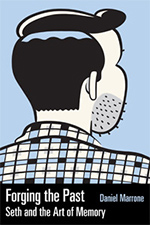
Forging the Past:
Seth and the Art of Memory
Daniel Marrone
University Press of Mississippi
208 Seiten
ISBN 978-1-4968-0731-1 (Hardcover)
~$ 60,00
August 2016
Verlagsseite
At once familiar and hard to place, the work of acclaimed Canadian cartoonist Seth evokes a world that no longer exists–and perhaps never existed, except in the panels of long-forgotten comics. Forging the Past offers a comprehensive account of this work and the complex interventions it makes into the past. Moving beyond common notions of nostalgia, Daniel Marrone explores the various ways in which Seth’s comics induce readers to participate in forging histories and memories. Marrone discusses collecting, Canadian identity, New Yorker cartoons, authenticity, artifice, and ambiguity–all within the context comics‘ unique structure and texture. Seth’s comics are suffused with longing for the past, but on close examination this longing is revealed to be deeply ambivalent, ironic, and self-aware. Marrone undertakes the most thorough, sustained investigation of Seth’s work to date, while advancing a broader argument about how comics operate as a literary medium.
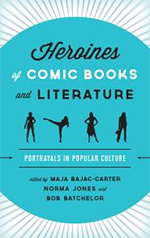
Heroines of Comic Books and Literature
Maja Bajac-Carter, Norma Jones und Bob Batchelor (Hrsg.)
Rowman & Littlefield
274 Seiten
ISBN 978-1-4422-7560-7 (Paperback)
~$ 30,00
August 2016
Verlagsseite
Despite the growing importance of heroines across literary culture—and sales figures that demonstrate both young adult and adult females are reading about heroines in droves, particularly in graphic novels, comic books, and YA literature—few scholarly collections have examined the complex relationships between the representations of heroines and the changing societal roles for both women and men. These engaging and important essays situate heroines within culture, revealing them as tough and self-sufficient females who often break the bounds of gender expectations in places readers may not expect. Analyzing how women are and have been represented in print, this companion volume to Heroines of Film and Television will appeal to scholars of literature, rhetoric, and media as well as to broader audiences that are interested in portrayals of women in popular culture.
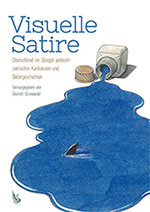
Visuelle Satire:
Deutschland im Spiegel politisch-satirischer Karikaturen und Bildergeschichten
Dietrich Grünewald (Hrsg.)
Christian A. Bachmann Verlag
186 Seiten
ISBN 978-3-941030-88-6 (Paperback)
~€ 29,90
August 2016
Verlagsseite
2015 war es 150 Jahre her, dass die wohl berühmteste Lausbubengeschichte der Weltliteratur, »Max & Moritz«, zum ersten Mal im Buchhandel erhältlich war. Wilhelm Busch, der mit dieser Bildergeschichte seinen großen Durchbruch als Künstler erlebte, stammte aus Wiedensahl im heutigen Landkreis Schaumburg. Zu diesem Anlass widmete man dem bedeutenden Künstler im Schaumburger Land ein großes Jubiläumsjahr mit zahlreichen Veranstaltungen. Teil dieses Jubiläumsjahres war die Fachtagung zur »Visuellen Satire. Deutschland im Spiegel politisch-satirischer Karikaturen und Bildergeschichten« im Stift Obernkirchen.
Denn Wilhelm Busch gilt bis heute vielen Zeichnern als großes Vorbild für ihr eigenes Schaffen und 2015 jährte sich auch zum 25. Mal das Jahr der Deutschen Wiedervereinigung – da lag es nahe, Zeichner und Wissenschaftler aus der neuen und alten Bundesländer einzuladen, um über die politische Satire und Karikatur nach 1945 in den beiden deutschen Staaten und nach 1990 zu diskutieren. Wie lebten und arbeiteten die Zeichner in dieser zweiten deutschen Diktatur? Wo waren die Berührungspunkte mit den Kollegen im Westen Deutschlands? Gibt es einen ostdeutschen und einen westdeutschen Humor? Wie hat sich die Szene nach 1990 verändert? Und welche Debatten über das künstlerische Schaffen werden heute geführt? Wie begegnet man den Vorwürfen rund um »Charlie Hebdo«? Dieser Tagungsband versammelt noch einmal alle Beiträge rund um dieses breite Themenspektrum und liefert Impulse für weitere Diskussionen.
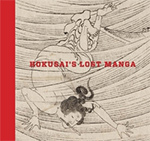
Hokusai’s Lost Manga
Katsushika Hokusai und Sarah E. Thompson
MFA Publications, Museum of Fine Arts, Boston
248 Seiten
ISBN 978-0-8784-6826-3 (Hardcover)
~$ 35,00
August 2016
Verlagsseite
A mysterious 1823 advertisement for illustrated books by renowned artist Katsushika Hokusai refers to an otherwise unknown work called Mister Iitsu’s Chicken-Rib Picture Book. According to the ad, the book was conceived in the same year that the final volume of Hokusai’s famous Manga series was supposed to have been published. Many therefore believe that the Chicken-Rib Picture Book was meant to be a continuation of the series, but a published copy of it has never been found. This eclectic and engaging collection of drawings from the peerless Japanese art collection at the Museum of Fine Arts, Boston, was likely intended for that lost book. It includes the sort of lively, behind-the-scenes sketches of daily life that have made the Manga series so beloved, as well as imaginatively conceived sea creatures, refined flowers, deities, heroes, and a variety of craftspeople and laborers. Reproduced here in full for the first time as a stand-alone volume, this rare sketchbook of Hokusai drawings makes for delightful fare.
